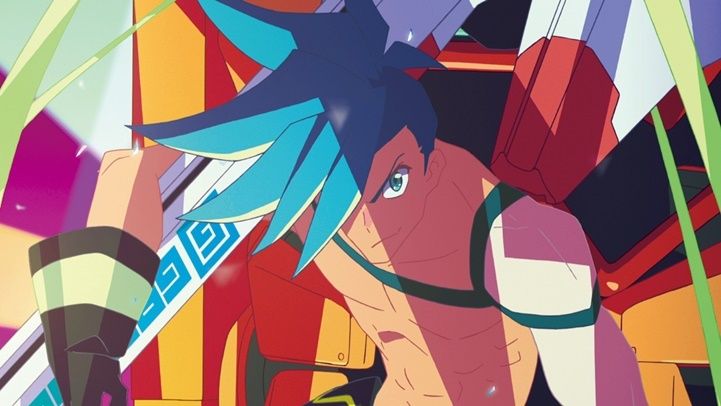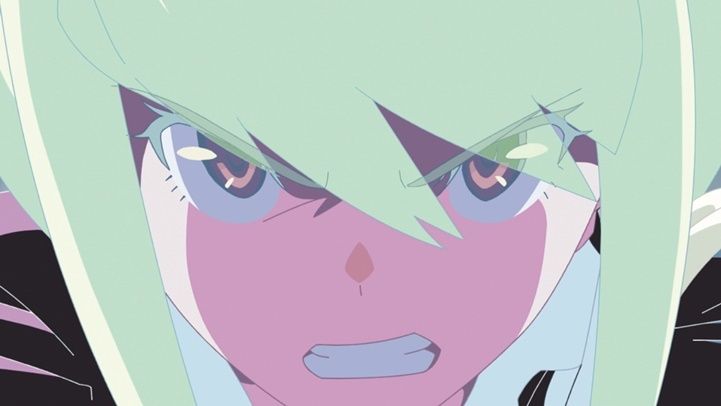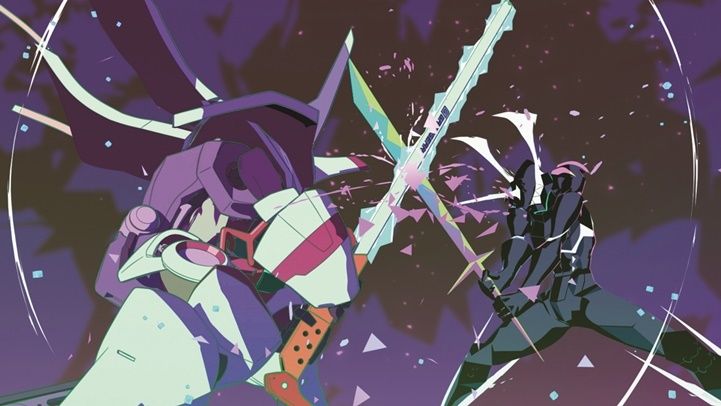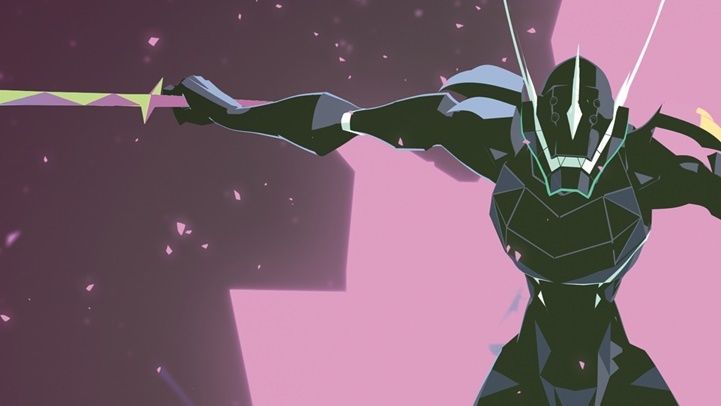MyAnimeList had the opportunity to sit down with Promare Director Hiroyuki Imaishi (Tengen Toppa Gurren Lagann, Kill la Kill), Producer, Creative Director Hiromi Wakabayashi, and designers Shigeto Koyama and Takashi "Super Log" Shibuya at Anime Expo 2019 to talk about the sci-fi film.
Promare was released in Japanese theaters in May 2019 and premiered in North America at Anime Expo on July 5. The film will be screened in North American theaters by GKIDS, in both subtitled and dubbed English. The general release will begin on September 20, following premiere events held on September 17 (dub) and 19 (sub).
Congratulations on the release of Trigger's first feature-length film. You first announced Promare here at Anime Expo in 2017. How do you feel being able to show the final work in front of the same audience two years later?
Wakabayashi: Normally, it would have been announced about six months in advance. I thought it was too early to make the announcement in 2017, but the film's release overseas would inevitably be delayed, so I wanted to announce it earlier than in Japan. I feel the same way now, and I'm glad I was able to reveal the final work at AX.
Are there differences in the process of writing a film (script & storyboard) like Promare versus works like Gurren Lagann and Kill la Kill, which were meant for television?
Imaishi: In television, we think about the organization of a story in 30-minute segments, so Promare is completely different in this area.
Given that the work's setting is so complicated, were there any difficulties in deciding how to organize the explanations within the two hours?
Imaishi: Well, if I crammed too much information in the beginning, it wouldn't have been conveyed well. That's why I devised the story to be conveyed throughout the film.
In interviews with Japanese media, screenwriter Kazuki Nakashima said that Promare originated from the idea of creating a juvenile film with Lio as the main character. At what point did the plan change to become the film we see today with Galo as the main character?
Wakabayashi: When Nakashima-san wrote the script, we examined it to see if it could be realized visually. We concluded that it would be difficult.
For this project, we wanted to put aside the things we were good at and instead aim for a new genre we had never done before. I reviewed it again to see whether this was what the fans would have wanted. I thought that the viewers wanted us to deliver something they expected, so we decided it would be better to make our own modifications, in a good way. Then, the four of us (Wakabayashi, Imaishi, Koyama, Nakashima) once again discussed ideas and designs and decided on the current content.
At the same time, in thinking that we wanted to deliver a work of our own to fans, we put our signature strengths into this movie production in a way that's different from television anime. It's an intentional way for us to reintroduce ourselves to viewers.
The world depicted in Promare appears to provide commentary on societal issues we see today, such as prejudice against minority groups like the Burnish. It also addresses complex topics, such as choosing between preventing versus limiting the effects of a natural disaster. What is the message you hope audiences will take away from the film?
Imaishi: Rather than wanting to convey a message or creating a story for the current times, the idea was to create a film that reflects the present condition. Instead of trying to deliver a specific message, we made the film with the ultimate goal of viewers being able to have fun. This way, viewers can bring their own takeaways from the film.
Cel-shaded 3DCG animation has made great advances in Promare, especially with the flames being animated in 3D instead of the traditional 2D drawings. Was this change difficult?
Imaishi: I thought a lot about how to merge 3D and 2D animation. Especially with the visualization of the flames, I think we spent a lot of time preparing for the actual work of using 3DCG drawings. The substance follows a geometric pattern but it flickers, with movement and an appearance similar to real flames. However, as revealed in the second half of the film, the reason the substance is made this way is that it is different from actual flames. In any case, I spent some time thinking about this component.
The blistering pace of the action might make it difficult for viewers to appreciate the work put into creating a seamless appearance between 3D and 2D animation. Was this a concern during the storyboarding process?
Imaishi: When drawing the storyboard, I did so by making decisions such as "This scene is 2D" or "This is 3D." If there was a scene that was impossible to draw in 3D for one reason or another, it was redrawn accordingly. This is something I pay very close attention to.
You modernized firefighters from the Edo period by adding machines and robots as firefighting tools. How did you choose design elements to create a fusion of traditional and modern technology?
Wakabayashi: When talking about extinguishing fire, there are parallels to the process of digestion. The characteristic trait of this work is one of an action anime which specializes in animating striking and suppressing fire. Weapons (called "Rescue Gear") are mounted so that the firefighters can use them to attack the fire.
Imaishi: In fact, the setting of the work is such that the function of Rescue Gear can be extended for military use. For example, the ability to break rubble can also be used as a weapon.
For the soundtrack of the film, Hiroyuki Sawano was brought back after having composed for Kill la Kill. How does the musical landscape and selection differ/evolve between Kill la Kill and Promare?
Wakabayashi: One concept was to be completely unreserved with the sound effects. Normally, we would follow the thought process of "Let's lower the music here to make this dialogue stand out," but this time we made it so that all the elements of music, sound effects, and dialogue are at full strength. During the process of adding music, only one scene used sound modestly. Everywhere else, it was pushed forward because we wanted the audience to feel the sound.
Imaishi: As a director, I wanted to experiment with how I could make the experience as immersive as possible. We tried to realize this by making full use of both the visual and aural information. I'm aiming for the limit of how much can be processed by the brain. In this way, rather than watching with our head, we get closer to a movie that can be experienced with the body.
Wakabayashi: That might also be the reason why Japanese fans have embraced it and watch it repeatedly.
Could you tell us where you are more conservative with the sound?
Wakabayashi: With the scene in the cave. In that scene, Director Imaishi said, "I think it's better to lower the sound as much as possible," so only that scene had the sound lowered. The sound still continues seamlessly. The sound production staff did their best.
Interview was conducted in Japanese by Yuko Yamamoto and Yumiko Higuchi from the MyAnimeList team. It has been translated into English and edited for clarity. |




